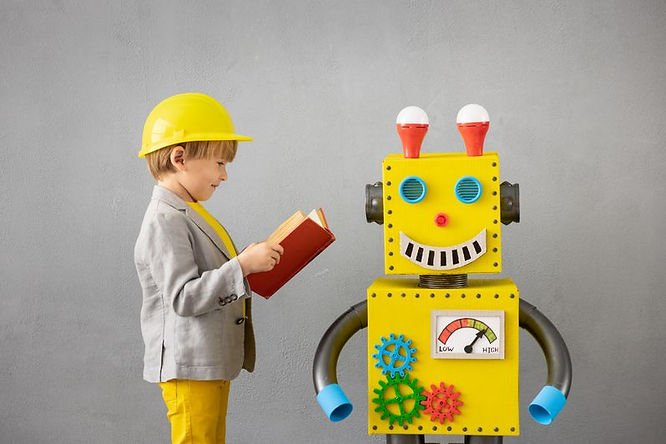In today’s competitive e-commerce landscape, providing excellent customer service is crucial for success. One effective way to enhance customer experience and streamline support is by implementing chatbots on your e-commerce site. These AI-powered conversational agents can quickly address common customer queries, guide users through the purchasing process, and even offer personalized recommendations, all while reducing the burden on your customer service team. Using chatbots for customer service on your e-commerce site can greatly enhance the user experience, reduce response times, and increase customer satisfaction.
10 Steps To Use Chatbots For Customer Service On Your E-commerce Site
- Define your objectives: Determine the main purpose of your chatbot, such as answering frequently asked questions (FAQs), guiding users through the purchasing process, or providing personalized product recommendations.
- Choose a chatbot platform: Select a chatbot platform that best suits your needs, such as Dialogflow, IBM Watson, or Microsoft Bot Framework. Consider factors like ease of integration, AI capabilities, and customization options.
- Design the conversation flow: Create a conversational flow that is intuitive and user-friendly. This includes crafting a welcoming message, anticipating user questions, and providing appropriate responses.
- Integrate with your e-commerce platform: Ensure that your chatbot is fully integrated with your e-commerce platform, allowing it to access relevant data and functions, such as inventory, product details, and user accounts.
- Train your chatbot: Use your existing customer service data to train your chatbot on common inquiries and issues. Continuously improve its performance by analyzing user interactions and updating its knowledge base.
- Offer multiple communication channels: Make your chatbot available on various channels, such as your website, social media, and messaging apps, to provide seamless customer service across platforms.
- Personalize the user experience: Leverage user data and preferences to provide personalized product recommendations, offers, and support.
- Monitor performance: Regularly evaluate your chatbot’s performance by tracking metrics like response time, customer satisfaction, and issue resolution rates. Make adjustments as needed to improve its effectiveness.
- Collect customer feedback: Request customer feedback on their chatbot interactions to identify areas for improvement and ensure a positive user experience.
- Maintain a human fallback option: While chatbots can handle many customer inquiries, complex issues may require human intervention. Ensure that users can easily escalate their concerns to a human representative if necessary.
By following these steps, you can successfully implement chatbots for customer service on your e-commerce site, providing your users with an enhanced shopping experience and improving your overall customer satisfaction.
Define Your Objectives

Defining your objectives is an essential step in creating a successful chatbot for your e-commerce site. Clearly outlining the goals will help you design a more focused and effective chatbot, ensuring it meets the needs of your users and contributes to your business objectives. Here are three common objectives for e-commerce chatbots:
Answering Frequently Asked Questions (FAQs):
One of the primary purposes of a chatbot can be to handle customer queries by answering FAQs. By automating this process, you can save time and resources, while providing instant support to your customers. To achieve this objective, you should:
Identify common customer questions by analyzing customer service data, reviews, and feedback.
Create a knowledge base that includes clear, concise, and accurate answers to these FAQs.
Train your chatbot to understand user queries and provide the most relevant responses from the knowledge base.
Continuously update the knowledge base to address new questions and keep the information up-to-date.
Guiding Users Through The Purchasing Process:
A chatbot can assist users in navigating your e-commerce site, making the purchasing process more straightforward and user-friendly. To create a chatbot that effectively guides users, you should:
Map out the typical user journey on your site, from browsing products to completing a purchase.
Identify potential pain points or areas where customers might need assistance.
Design conversation flows that address these pain points and offer step-by-step guidance through the purchasing process.
Ensure your chatbot can handle common transaction-related queries, such as shipping information, payment options, and order tracking.
Providing Personalized Product Recommendations:
A chatbot can offer personalized product suggestions based on user preferences, browsing history, or other relevant data, enhancing the shopping experience and increasing the likelihood of a sale. To achieve this objective, you should:
Collect and analyze user data, such as previous purchases, browsing history, and stated preferences.
Develop algorithms that can generate personalized product recommendations based on this data.
Train your chatbot to present these recommendations conversationally and engagingly.
Continuously refine the recommendation algorithms based on user feedback and purchase behavior.
By carefully defining your chatbot’s objectives and tailoring its design and functionality to meet these goals, you can create a valuable tool that enhances the customer experience on your e-commerce site and contributes to your business’s overall success.
Choose A Chatbot Platform

Choosing the right chatbot platform is crucial for the success of your e-commerce chatbot. Each platform has its features, capabilities, and pricing structures. Here are some key factors to consider when selecting a chatbot platform:
Ease Of Integration
The platform should integrate seamlessly with your existing e-commerce site, CMS (Content Management System), CRM (Customer Relationship Management) system, and other relevant tools. This will ensure smooth data exchange between your chatbot and your e-commerce infrastructure.
AI Capabilities
Advanced AI and natural language processing (NLP) capabilities are essential for a chatbot to understand user queries and provide accurate responses. Evaluate the platform’s AI features, such as intent recognition, entity extraction, and machine learning capabilities to ensure they meet your requirements.
Customization Options
The chatbot platform should offer a high degree of customization to match your brand’s identity and meet your specific needs. This includes customizing the chatbot’s appearance, conversation flow, and language capabilities.
Scalability
Choose a platform that can scale with your business as it grows. This means the ability to handle increased user interactions, support multiple languages, and expand to new communication channels.
Omnichannel Support
A platform that supports multiple channels, such as web, mobile apps, social media, and messaging apps, will enable you to provide a consistent customer experience across platforms.
Analytics And Reporting
The platform should offer robust analytics and reporting features to help you track your chatbot’s performance, user interactions, and other relevant metrics. This will enable you to identify areas for improvement and optimize your chatbot over time.
Security And Compliance
Ensure the platform complies with data protection and privacy regulations, such as GDPR, and provides secure data storage and transmission.
Support And Documentation
A platform with comprehensive documentation, tutorials, and responsive customer support will make it easier for you to build and maintain your chatbot.
Some popular chatbot platforms for e-commerce include:
Dialogflow
Powered by Google, Dialogflow offers advanced NLP capabilities, easy integration with various platforms, and a user-friendly interface.
IBM Watson
IBM Watson Assistant provides powerful AI capabilities, pre-built industry-specific content, and a range of integrations with popular e-commerce platforms.
Microsoft Bot Framework
This platform allows you to build, test, and deploy chatbots across multiple channels and includes features like adaptive dialogs, language understanding, and speech capabilities.
By carefully considering these factors and evaluating different chatbot platforms, you can choose the one that best aligns with your e-commerce site’s needs and objectives.
Design The Conversation Flow

Designing an intuitive and user-friendly conversation flow is crucial for creating a successful e-commerce chatbot. A well-designed conversation flow ensures smooth interactions between the chatbot and users, ultimately enhancing customer experience. Here are some steps to help you design an effective conversation flow:
Craft A Welcoming Message
Begin with a friendly and engaging welcome message that greets users and briefly explains the purpose of the chatbot. This sets the tone for the interaction and helps users understand what to expect from the chatbot.
Understand User Intents
Analyze your customer service data and user behavior to identify common customer intents, such as asking for product information, requesting order status, or seeking help with the purchasing process.
Map Out Conversation Paths
For each identified user intent, create a conversation path that guides the user to the desired outcome. This includes designing a series of questions and responses that address the user’s needs and provide relevant information or assistance.
Anticipate User Questions
Think about the different ways users might phrase their questions or concerns and ensure your chatbot can understand these variations. This may involve using synonyms, colloquial expressions, or common misspellings.
Create Context-Aware Responses
Your chatbot should be able to understand the context of user queries and provide appropriate responses. This may require managing conversation states, tracking user data, or leveraging external data sources, such as your e-commerce platform’s product database or order management system.
Design Error Handling
Plan for instances when the chatbot may not understand a user’s query or when the user provides an unexpected response. Develop strategies for handling these situations gracefully, such as asking for clarification, offering suggestions, or providing the option to escalate the issue to a human representative.
Incorporate Personalization
Leverage user data and preferences to create a more personalized experience. This might involve using the user’s name, providing tailored product recommendations, or offering customized support based on their previous interactions with your brand.
Test And Iterate
Before deploying your chatbot, conduct thorough testing with a diverse group of users to identify any issues or areas for improvement. Gather feedback, refine the conversation flow, and repeat this process until you achieve the desired user experience.
By carefully designing your chatbot’s conversation flow, you can create a more intuitive and engaging user experience, leading to increased customer satisfaction and a higher likelihood of achieving your business objectives.
Integrate With Your E-Commerce Platform

Integrating your chatbot with your e-commerce platform is crucial for providing seamless and accurate customer support. A well-integrated chatbot can access relevant data and functions, allowing it to better understand user queries and provide more helpful responses. Here are some steps to ensure successful integration:
Choose A Compatible Chatbot Platform
Select a chatbot platform that is compatible with your e-commerce platform or provides pre-built integrations or APIs for easy connection. Some popular e-commerce platforms, such as Shopify, WooCommerce, and Magento, offer integration options with various chatbot platforms.
Establish Data Connections
Set up secure connections between your chatbot platform and your e-commerce platform’s databases, allowing the chatbot to access information such as inventory levels, product details, pricing, and user account data.
Define Data Access Permissions
Determine the types of data and functions your chatbot needs to access and set appropriate permissions. This will ensure the chatbot can perform its intended tasks without compromising data security.
Implement APIs
Leverage APIs (Application Programming Interfaces) provided by your e-commerce platform to enable your chatbot to interact with key functions, such as adding items to a user’s cart, processing orders, or updating order status.
Test The Integration
Conduct thorough testing to ensure the chatbot can accurately access and utilize the required data and functions. This may involve creating test scenarios that simulate various user interactions and monitoring the chatbot’s responses for accuracy and consistency.
Handle User Authentication
If your chatbot needs to access user-specific information, such as account details or order history, implement a secure user authentication process. This may involve using OAuth or similar protocols to verify user identity and grant appropriate access permissions.
Optimize Performance
Ensure your chatbot can handle the additional data and function requests without causing performance issues or delays. This may involve optimizing your chatbot’s code, leveraging caching techniques, or scaling your e-commerce platform’s infrastructure.
Monitor And Maintain The Integration
Regularly monitor the integration to identify any issues or potential bottlenecks. Update your chatbot’s code and integration settings as needed to maintain optimal performance and ensure compatibility with any changes to your e-commerce platform.
By following these steps, you can successfully integrate your chatbot with your e-commerce platform, allowing it to access relevant data and functions and provide a more efficient and effective customer support experience.
Train Your Chatbot

Training your chatbot is essential to ensure it understands user queries and provides accurate responses. Leveraging your existing customer service data and continuously improving its performance will help create a more effective and satisfying user experience. Here’s how to train your chatbot:
Analyze Customer Service Data
Review past customer interactions, such as emails, live chat transcripts, or support tickets, to identify common inquiries, issues, and customer intents. This data will serve as the foundation for your chatbot’s knowledge base.
Create A Knowledge Base
Develop a knowledge base containing information, solutions, and responses to the common queries and issues you identified. This knowledge base will be used by your chatbot to answer user questions.
Train On Intents And Entities
Using your chatbot platform’s tools and features, train your chatbot to recognize user intents (goals or actions) and entities (relevant pieces of information) from customer queries. This may involve providing sample phrases, defining keywords, or using machine learning techniques.
Test The Chatbot’s Understanding
Conduct tests to evaluate your chatbot’s ability to recognize user intents and entities accurately. Identify any gaps or misinterpretations and refine the training data accordingly.
Implement Context Awareness
Train your chatbot to understand the context of user queries and maintain the context throughout the conversation. This may involve using conversation states, tracking user data, or integrating external data sources.
Train On Variations
Ensure your chatbot can understand different ways users might phrase their questions or express their concerns. Include variations, synonyms, colloquialisms, and common misspellings in your training data.
Monitor User Interactions
Regularly analyze user interactions with your chatbot to identify areas for improvement, such as misunderstood queries or incorrect responses. Use this information to update your chatbot’s training data and knowledge base.
Implement Feedback Loops
Encourage users to provide feedback on their chatbot interactions, either through explicit feedback requests or by monitoring user reactions, such as follow-up questions or abandoning the conversation. Use this feedback to refine your chatbot’s training data and improve its performance.
Continuously Update The Knowledge Base
Keep your chatbot’s knowledge base up-to-date by adding new information, updating existing data, and addressing newly identified customer inquiries or issues.
Iterate And Improve
Continuously refine your chatbot’s training data, knowledge base, and AI algorithms to improve its performance over time. This may involve using advanced machine learning techniques, such as reinforcement learning or transfer learning, to enhance your chatbot’s understanding and responsiveness.
By effectively training your chatbot and continuously improving its performance, you can create a valuable customer service tool that provides accurate, helpful, and satisfying user interactions.
Offer Multiple Communication Channels

Offering your chatbot on multiple communication channels can significantly enhance the customer experience by providing seamless and consistent support across various platforms. This omnichannel approach ensures that customers can access assistance whenever and wherever they need it.
Here’s how to make your chatbot available on different communication channels:
Website Integration
Integrate your chatbot directly into your e-commerce website, typically as a floating widget or chat window that users can access from any page. This allows customers to engage with your chatbot while browsing your site, making it easy for them to seek assistance without leaving the platform.
Social Media Integration
Make your chatbot available on popular social media platforms like Facebook, Twitter, or Instagram. Many chatbot platforms offer built-in integration with these platforms, enabling your chatbot to respond to messages and comments directly through the social media interface.
Messaging Apps
Integrate your chatbot with popular messaging apps like WhatsApp, Facebook Messenger, or Telegram. This allows users to interact with your chatbot in a familiar messaging environment, making it convenient for them to seek support while using their preferred communication tools.
Mobile App Integration
If your e-commerce business has a mobile app, integrate your chatbot within the app to provide users with seamless support while they’re shopping on their mobile devices.
Voice Assistants
Consider expanding your chatbot’s capabilities to include voice-based interactions, enabling customers to engage with your chatbot through voice assistants like Amazon Alexa, Google Assistant, or Apple Siri.
Email And SMS
While not directly integrated, you can also set up your chatbot to send email or SMS notifications to users based on their interactions or to follow up on previous conversations. This can help maintain engagement and provide additional support channels.
To successfully offer your chatbot on multiple communication channels, keep the following considerations in mind:
Consistent Experience
Ensure that your chatbot provides a consistent user experience across all channels, including the tone of voice, conversation flow, and available functionalities.
Channel-Specific Features
Leverage channel-specific features, such as quick replies or rich media on messaging apps, to enhance the user experience and streamline interactions.
Centralized Data Management
Implement a centralized data management system to maintain consistent user information and chat history across channels, enabling your chatbot to provide personalized and context-aware support.
Analytics And Monitoring
Track user interactions, engagement, and chatbot performance across all channels to identify trends, areas for improvement, and potential issues.
By making your chatbot available on multiple communication channels and ensuring a seamless and consistent user experience, you can provide comprehensive customer service that meets the diverse needs and preferences of your audience.
Personalize The User Experience

Personalizing the user experience can significantly enhance customer satisfaction and engagement with your e-commerce chatbot. By leveraging user data and preferences, your chatbot can provide tailored product recommendations, offers, and support that cater to individual customer needs. Here’s how to personalize the user experience with your chatbot:
Collect User Data
Gather relevant user data, such as browsing history, purchase history, and user preferences, through your e-commerce platform, CRM system, or other data sources. Be sure to comply with data privacy regulations, such as GDPR, when collecting and processing user data.
Analyze User Behavior
Analyze user data to identify patterns, preferences, and trends that can inform personalization strategies. This may include segmenting users based on their interests, purchase frequency, or demographic factors.
Integrate User Data Into Your Chatbot
Connect your chatbot to your user data sources, enabling it to access and utilize the information to provide personalized support and recommendations.
Personalized Greetings
Address users by their name and reference their previous interactions with your brand, creating a more engaging and personalized experience from the start.
Tailored Product Recommendations
Use user data to provide personalized product recommendations based on their preferences, browsing history, or items in their cart. This can help increase the likelihood of a purchase by presenting users with relevant and appealing options.
Customized Offers And Promotions
Leverage user data to present targeted offers, discounts, or promotions that are relevant to the individual user. This can help improve conversion rates and build customer loyalty.
Personalized Support
Utilize user data to provide personalized support based on their purchase history, account details, or previously reported issues. This can help streamline the support process and make it more efficient for both the user and your customer service team.
Adapt Conversation Flow
Adjust your chatbot’s conversation flow based on user data and preferences, ensuring that the chatbot addresses their specific needs and interests during the interaction.
Context-Aware Assistance
Enable your chatbot to provide context-aware assistance by tracking user data and conversation history across multiple channels and interactions. This ensures that the chatbot understands the user’s current needs and can provide relevant and accurate support.
Continuously Refine Personalization
Regularly review and update your personalization strategies based on user feedback, chatbot performance data, and changes in user behavior. This will help you maintain a highly relevant and effective personalized user experience.
By personalizing the user experience with your chatbot, you can create more engaging, relevant, and satisfying interactions that cater to individual customer needs, ultimately driving higher customer satisfaction, loyalty, and conversion rates.
Monitor Performance

Monitoring your chatbot’s performance is essential to ensure that it is providing the best possible customer service and meeting your business objectives. Regular evaluation of key metrics can help identify areas for improvement and inform adjustments to enhance the chatbot’s effectiveness. Here are some steps to monitor and improve your chatbot’s performance:
Define Success Metrics
Determine the key performance indicators (KPIs) that are most relevant to your chatbot’s objectives, such as response time, customer satisfaction, issue resolution rate, conversion rate, or user engagement.
Implement Analytics Tools
Use built-in analytics tools provided by your chatbot platform or integrate third-party analytics tools to collect and analyze performance data. This will enable you to track your chatbot’s performance over time and identify trends or patterns.
Monitor Real-Time Performance
Keep an eye on your chatbot’s real-time performance to identify any sudden issues or bottlenecks that may arise, such as increased response times, error rates, or system crashes.
Collect User Feedback
Encourage users to provide feedback on their interactions with your chatbot, either through explicit feedback requests, rating systems, or by analyzing user reactions, such as follow-up questions or abandoned conversations.
Analyze Performance Data
Regularly review your chatbot’s performance data to identify strengths, weaknesses, and areas for improvement. Look for patterns or trends that may indicate potential issues or opportunities for optimization.
Conduct A/B Testing
Test different versions of your chatbot’s conversation flow, responses, or design elements to determine which variations perform best. This can help you optimize the chatbot’s user experience and improve overall performance.
Refine Conversation Flow And AI Algorithms
Based on your performance analysis and user feedback, make adjustments to your chatbot’s conversation flow, AI algorithms, and knowledge base to improve its effectiveness and user experience.
Train Your Chatbot On New Data
Regularly update your chatbot’s training data with new customer inquiries, issues, or feedback to ensure it stays up-to-date with current user needs and expectations.
Optimize Integrations
Monitor and optimize your chatbot’s integrations with your e-commerce platform, CRM system, or other external data sources to ensure seamless data access and efficient performance.
Continuously Iterate And Improve
Continuously monitor, analyze, and refine your chatbot’s performance, making data-driven adjustments to its design, conversation flow, AI algorithms, and integrations to ensure ongoing improvement and effectiveness.
By regularly monitoring your chatbot’s performance and making adjustments based on data and user feedback, you can ensure that your chatbot remains an effective, engaging, and valuable customer service tool for your e-commerce business.
Collect Customer Feedback

Collecting customer feedback is crucial for understanding how well your chatbot meets user needs and expectations. This information can help you identify areas for improvement, ensuring a positive user experience and driving continuous enhancement. Here are some strategies for collecting customer feedback on chatbot interactions.
In-Chat Feedback Requests
Incorporate feedback requests directly within your chatbot’s conversation flow. After resolving a user’s issue or providing information, ask users to rate their experience or provide feedback on the interaction.
Post-Interaction Surveys
Send users a short survey or feedback form after their chatbot interaction. This can be done via email, SMS, or through a messaging app, depending on the user’s communication preferences and the channels you’re using.
User-Initiated Feedback
Provide an option within the chatbot interface for users to voluntarily submit feedback or report issues at any point during the interaction.
Monitor User Reactions
Analyze user responses and reactions during chatbot interactions, such as follow-up questions, confusion, or abandoning the conversation, as these can provide valuable insights into areas for improvement.
Social Media Monitoring
Keep an eye on social media platforms for mentions of your chatbot or related user experiences. This can help you gather unsolicited feedback and identify any recurring issues or trends.
Analyze Customer Support Tickets
Review customer support tickets or inquiries that follow chatbot interactions to identify any unresolved issues or areas where the chatbot fell short of user expectations.
Incentivize Feedback
Encourage users to provide feedback by offering incentives, such as discounts, rewards, or entry into a prize draw. This can help increase the likelihood of users sharing their thoughts and experiences.
Focus Groups Or Interviews
Conduct focus groups or user interviews to gather more in-depth feedback and insights into user experiences and preferences. This can help you better understand how users perceive your chatbot and identify opportunities for improvement.
Use Net Promoter Score (NPS)
Implement the Net Promoter Score metric to gauge customer satisfaction and loyalty. NPS asks users how likely they are to recommend your chatbot or brand to others, providing valuable feedback on overall user satisfaction.
Continuously Iterate And Improve
Use the feedback collected to continuously refine and improve your chatbot’s design, conversation flow, AI algorithms, and integrations. This will help ensure that your chatbot remains a valuable and satisfying customer service tool.
By actively collecting customer feedback on chatbot interactions and using this information to drive improvements, you can ensure a positive user experience and enhance the overall effectiveness of your chatbot.
Maintain A Human Fallback Option

Maintaining a human fallback option is essential for providing a comprehensive and satisfying customer service experience. While chatbots can efficiently handle many customer inquiries, there will be cases when human intervention is necessary to address more complex or nuanced issues. Here are some tips for implementing a smooth human fallback option in your chatbot:
Identify Escalation Triggers
Determine the types of situations or user requests that warrant escalation to a human representative. This may include complex issues, sensitive topics, or user frustration.
Train your Chatbot To Recognize Escalation Cues
Teach your chatbot to recognize specific phrases or user behaviors that indicate a need for human intervention, such as repeated questions, expressions of frustration, or direct requests to speak with a human representative.
Seamless Handoff
Develop a process for seamlessly transferring the user from the chatbot to a human representative, ensuring that the representative has access to the user’s chat history and context to provide efficient and informed support.
Set User Expectations
Inform users upfront that a human fallback option is available and explain the process for escalating their concerns. This can help reassure users and build trust in your customer service capabilities.
Integrate With Your Customer Support Platform
Ensure that your chatbot is fully integrated with your customer support platforms, such as a help desk or CRM system, allowing for efficient handoff and collaboration between the chatbot and human support agents.
Monitor Response Times
Track the response times for human fallback requests to ensure that users receive prompt assistance when needed. If response times are too long, consider adjusting staffing levels or support processes to improve efficiency.
Provide A Fallback Option Across Channels
Ensure that the human fallback option is available across all communication channels, including your website, social media, messaging apps, and mobile app.
Train Support Agents
Train your human support agents on how to handle chatbot escalations effectively and provide guidance on how to collaborate with the chatbot in providing customer service.
Analyze Fallback Interactions
Regularly review and analyze chatbot escalations and human fallback interactions to identify patterns, trends, or issues that may warrant adjustments to your chatbot’s capabilities or escalation process.
Continuously Improve The Chatbot
Use insights gained from human fallback interactions to enhance your chatbot’s performance, reducing the need for human intervention and improving overall customer service efficiency.
By implementing a smooth human fallback option and ensuring users can easily escalate their concerns to a human representative, you can provide a comprehensive and satisfying customer service experience that effectively addresses the diverse needs of your customers.
In conclusion, integrating chatbots into your e-commerce site can significantly improve customer satisfaction and contribute to the overall success of your online business. By carefully planning, designing, and monitoring your chatbot’s performance, you can provide a seamless and efficient customer service experience that meets the evolving needs of your users. Embrace this innovative technology to transform the way you interact with your customers and stay ahead of the competition in the ever-growing world of e-commerce. Learn more with our coaching program to build successful e-commerce.

